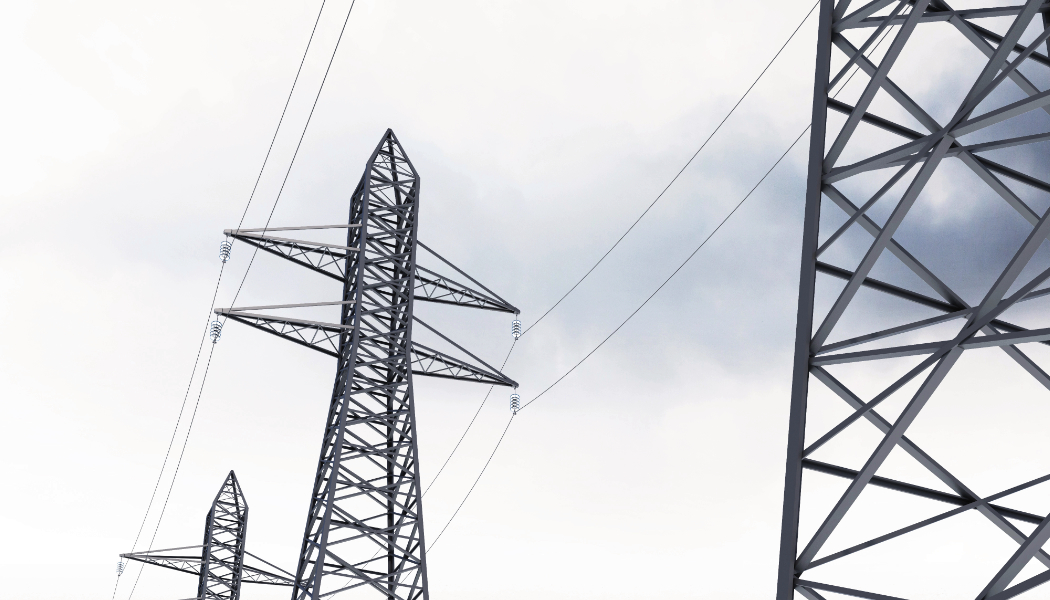All
HVDC Transmission Lines and Inter-Regional Electricity
by Ed Burke and Kelly Burke, Dennis K. Burke Inc.

Technological advances are moving more power across longer distances and enhancing grid capabilities.
The U.S. power grid delivers power to about 16 million customers every day.
“Our power system is evolving rapidly,” said David Palchak, principal investigator of the National Transmission Planning Study. “The most cost-effective solutions to accommodate this change requires a significant expansion of the transmission system – potentially doubling in size by 2050.”
Unfortunately, construction of new high-voltage transmission lines in the U.S. has slowed to a snail’s pace over the last decade.
High-energy transmission lines carry massive amounts of electricity across long distances from power plants to substations and ultimately to the ratepayers. They operate at high voltages to minimize power losses and maximize efficiency during transmission.
By transmitting electricity at high voltages, the current can be significantly reduced, leading to considerably lower resistive losses and more efficient energy transfer over long distances. This means more of the generated power reaches its destination, which translates to cost savings and more efficient use of resources.
High-energy transmission lines primarily utilize either alternating current (AC) or direct current (DC). AC transmission has historically been the dominant method due to the ease of transforming voltages, but High Voltage Direct Current (HVDC) systems are gaining prominence for very long distances, particularly for subsea cables and connecting asynchronous grids, as they further reduce losses.
HVDC Technology
HVDC technology advancements are enhancing the efficiency and applicability of HVDC for long-distance transmission.
Ultra-High Voltage (UHV) systems operate at significantly higher voltages. These systems further minimize losses and can transmit massive amounts of power over extremely long distances.
Advanced conductors feature High-Temperature Low-Sag (HTLS) and composite core conductors that offer increased current-carrying capacity, reduced line sag, and improved efficiency.
Smart Grid integration facilitates real-time monitoring, AI-driven analytics, and other smart grid technologies enhance reliability and optimize performance.
HVDC VS. HVAC Comparison
The cost comparison between High-Voltage Direct Current (HVDC) and High-Voltage Alternating Current (HVAC) transmission systems is complex and depends heavily on several project-specific factors, particularly transmission distance and power capacity.
HVAC generally has lower initial costs, especially for shorter distances, as it doesn’t require complex and costly converter stations. But HVAC experiences higher power losses over longer distances due to reactive power requirements and other complications. These losses increase with distance, potentially making HVAC less efficient and more costly to operate over very long distances.
HVDC typically has higher initial capital costs primarily due to the need for expensive converter stations at both ends of the line, which convert AC to DC and then back to AC. However, HVDC can utilize fewer conductors (typically two for DC versus three for AC) and potentially smaller, lighter transmission towers, potentially reducing line construction costs.
HVDC typically has lower transmission losses over long distances due to the absence of reactive power losses, the skin effect, and other factors that affect AC lines.
The Break-Even Distance
The concept of a break-even distance is the distance at which the higher initial cost of HVDC is offset by its lower operational losses and potentially lower line construction costs.
The break-even distance for overhead lines is often cited in the range of around 400-500 miles. It’s around 30-60 miles for underground cables and about 10-30 miles for submarine cables, where the high capacitance of AC cables leads to substantial losses.
Inter-Regional Electricity Transmission
Inter-regional transmission is critical to our electric power system, allowing regions to transport energy between one another in periods of need. An expanded network of interconnected transmission will improve reliability by providing access to additional generation sources in the face of uncertainties such as fuel or generation loss, transmission outages, extreme weather events and wildfires.
System stability can be enhanced by expanding the geographic diversity of variable energy resources. By providing pathways for energy transfer between regions, HVDC links can help manage demand surges, mitigate disruptions from extreme weather events, and improve the ability of grids to recover from outages.
HVDC transmission plays a crucial and expanding role in inter-regional electricity transmission. There are many examples of projects connecting different regions that highlight the technology’s effectiveness in long-distance power transmission. The one you may be familiar with is the New England Clean Energy Connect. This cross-border HVDC transmission line connects Quebec with Maine, delivering Canadian hydroelectricity to the New England grid.
High-energy transmission lines are fundamental to modern energy needs. They enable the delivery of electricity from diverse sources, including remote renewable energy generation, to population centers. Their role in ensuring grid stability, reliability, and facilitating the transition to a sustainable energy future makes their expansion and modernization critical.
Ed and Kelly Burke are respectively Chairman of the Board and Senior Marketing Manager at fuel distributor Dennis K. Burke Inc. They can be reached at 617-884-7800 or ed.burke@burkeoil.com and kelly.burke@burkeoil.com.
Related Posts
 National Energy Choice Legislation Advances Through Committee
National Energy Choice Legislation Advances Through Committee
Posted on November 20, 2025
 New and Improved: NEFI Member Benefits Deliver More Value
New and Improved: NEFI Member Benefits Deliver More Value
Posted on October 17, 2025
 It’s Upgrade Season. Get the Sale.
It’s Upgrade Season. Get the Sale.
Posted on October 16, 2025
 The Value of Providing Value
The Value of Providing Value
Posted on October 16, 2025
Enter your email to receive important news and article updates.
